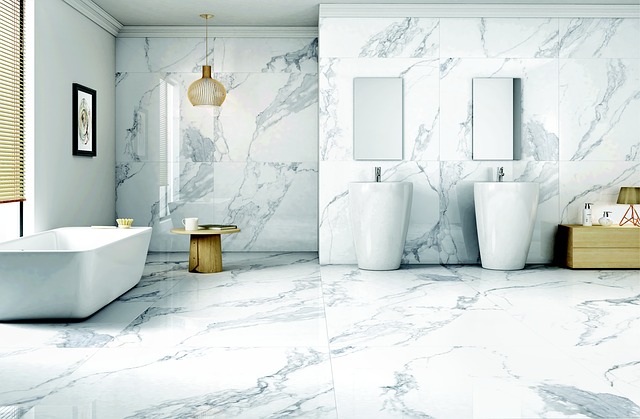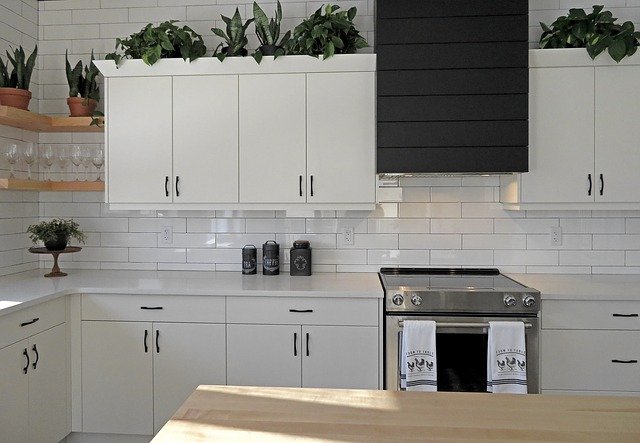How to tile a kitchen: Ceramic wall tiles come in different shapes and sizes with the 150 mm square ones being the most popular. To tile or re-tile a kitchen or bathroom first prepare the walls by removing all of the old tiles, filling any holes to make the wall even. Any loose or flaky paint must be scraped back to solid.

Then bond the wall using a PVA adhesive mixed to the specifications on the container then leave to dry.
Set your levels to begin by using a spirit level to get a perfect horizontal line up to 15mm less than the first tile above the worktop then fix a long strip of wood along the wall to lay the first tiles on. Sometimes the kitchen worktop is straight and level and then this can be used for the first row of tiles but if it is not then fix the wood a tile’s width above the worktop.

Measure out the tiles all along the wall from end to end to see how much of a gap there will be at either end then make a mark half a tile or so in from the end to begin.
Start from the marked line and apply the adhesive evenly then run a comb through it to serrate it so the tile will bed-in. Bed the tiles in and use plastic crosses to the corners to even the spaces out and hold the tiles in place while the adhesive dries.

You can just dab adhesive to the corners of the tiles and fix them one by one but this is not the best way to do it and it leaves spaces behind the tiles allowing them to be broken more easily.
Once all the whole tiles are on you can then cut and fix the ones that have to be cut. Tiles that have to be cut for power points can be cut with a machine or scored and chipped out by the careful use of a pliers.
Clean off adhesive regularly to keep the surface clean. When the adhesive is fully dry you can pull out the spacers and then using a rubber grouter grout the spaces between the tiles. Do about a metre then rub off the surface with a sponge. A round stick can be used to round out the joints to make them look good. After an hour the surface can be polished with a dry cloth. Don’t forget to mastic the bottom of the tiles to prevent water from going behind.
Images from Pixabay
Authors get paid when people like you upvote their post.
If you enjoyed what you read here, create your account today and start earning FREE STEEM!
If you enjoyed what you read here, create your account today and start earning FREE STEEM!